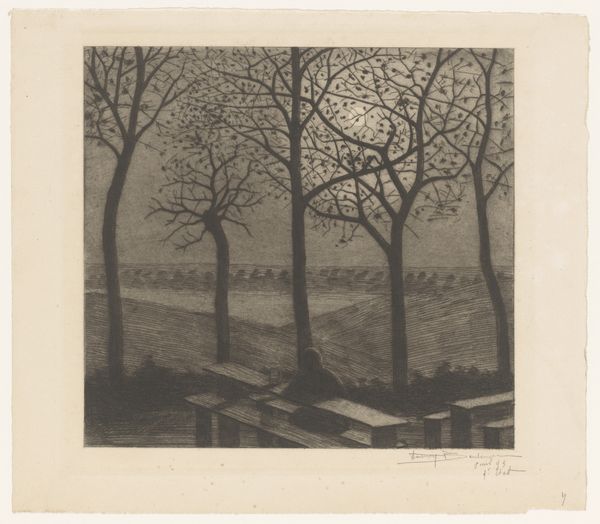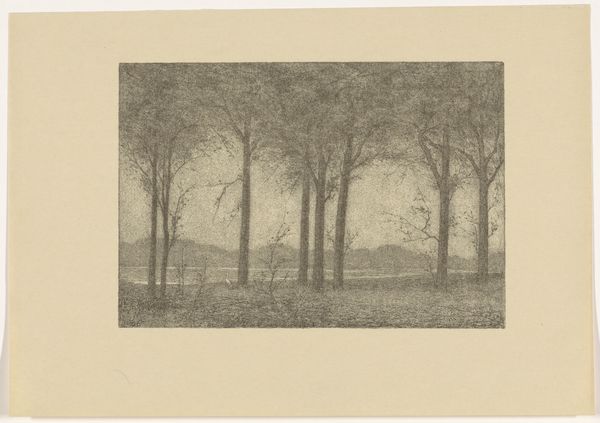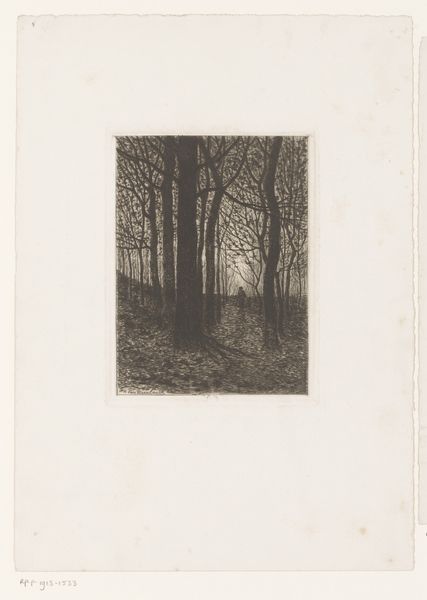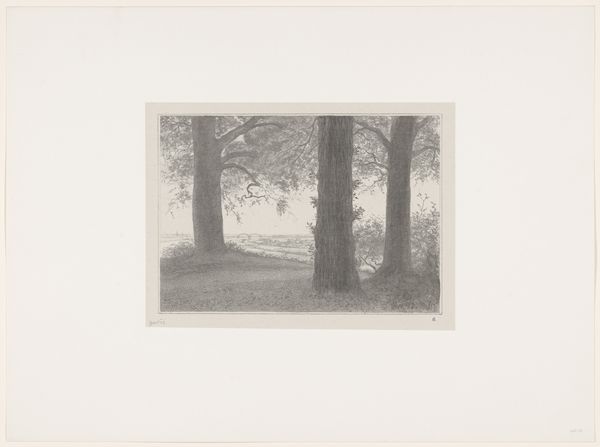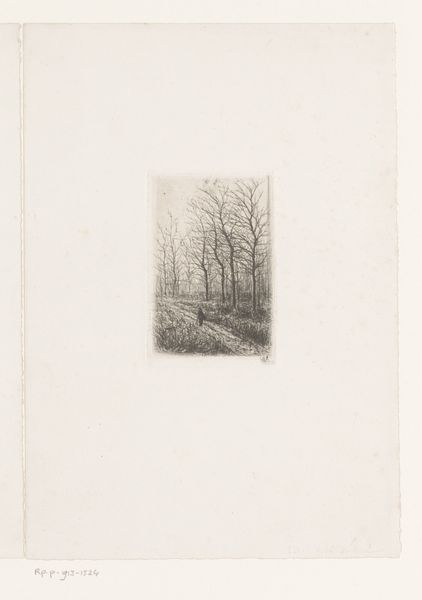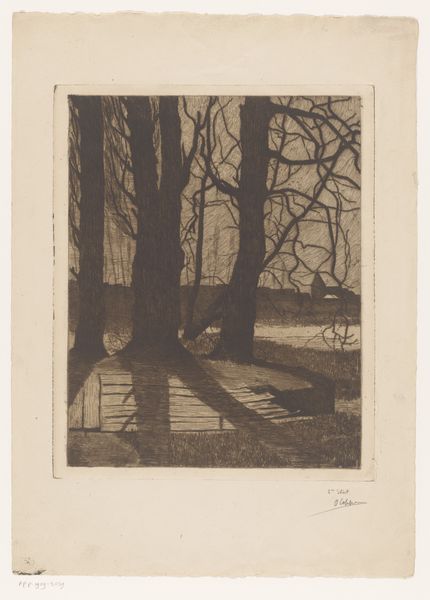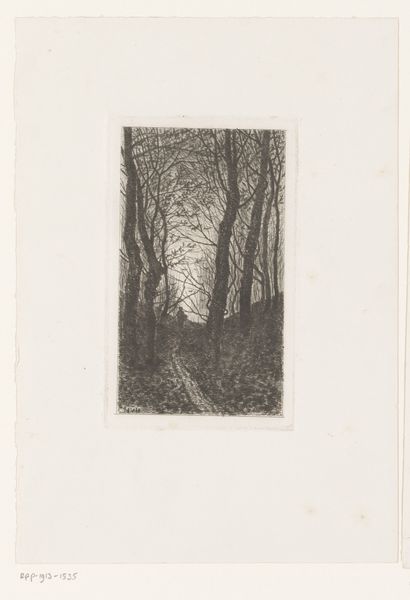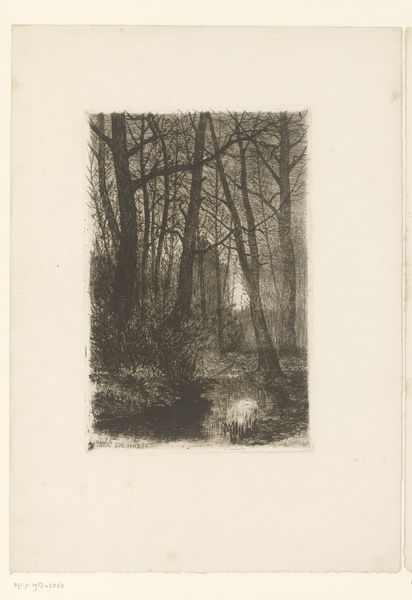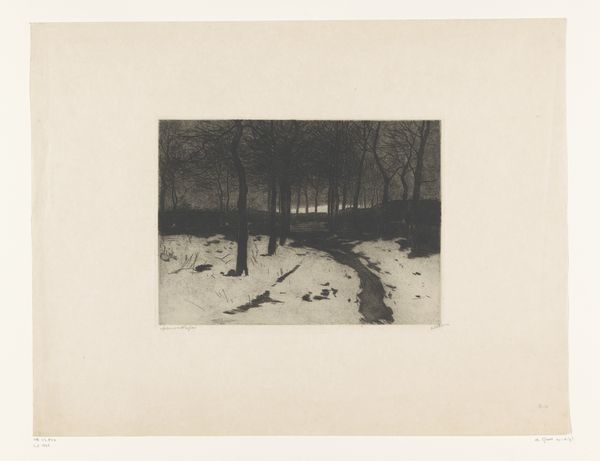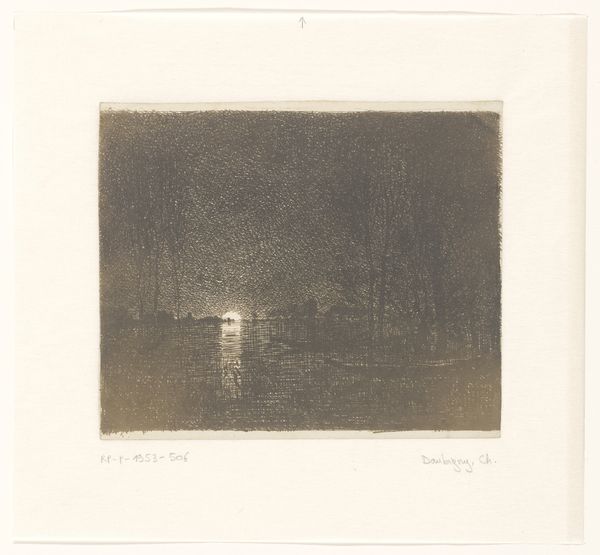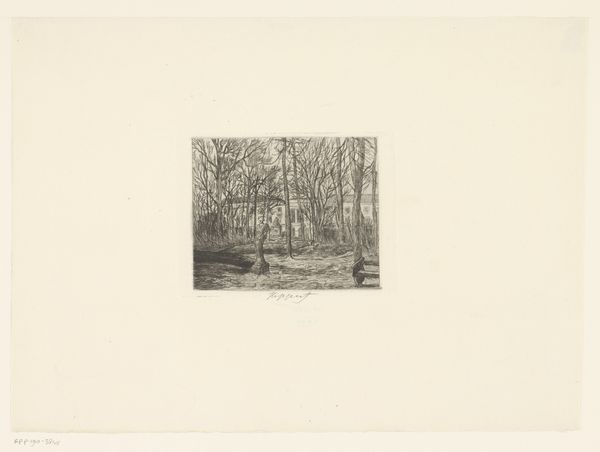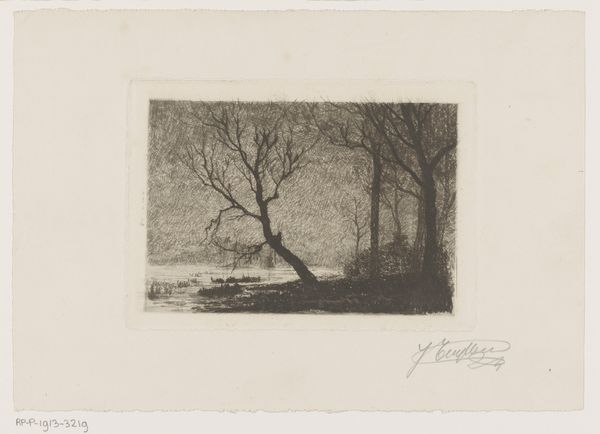
Figuur aan een picknicktafel in een door de maan beschenen landschap met kale bomen 1893 - 1896
0:00
0:00
drawing, paper, ink
#
drawing
#
landscape
#
figuration
#
paper
#
ink
#
symbolism
Dimensions: height 267 mm, width 288 mm
Copyright: Rijks Museum: Open Domain
This somber etching by Herman Boulenger, made around the turn of the 20th century, is heavy with atmosphere. Its tonal qualities are entirely dependent on the etching process. Look closely, and you’ll see that the image is built up from very fine, closely-hatched lines. An etching is made by coating a metal plate with a waxy, acid-resistant ground, drawing an image into it with a sharp needle, then immersing the plate in acid. The longer the acid bath, the deeper the lines will be etched, allowing for a darker impression when the plate is inked and printed. See how Boulenger has used this process to create a whole world of shadows, with the moon barely peeking through the branches. The figure at the picnic table almost disappears into the night. Prints like this were relatively affordable at the time, because multiple impressions could be made from a single plate. As such, they brought original art into middle-class homes. It's a reminder that "art" is never really separate from larger economic and social forces.
Comments
No comments
Be the first to comment and join the conversation on the ultimate creative platform.
